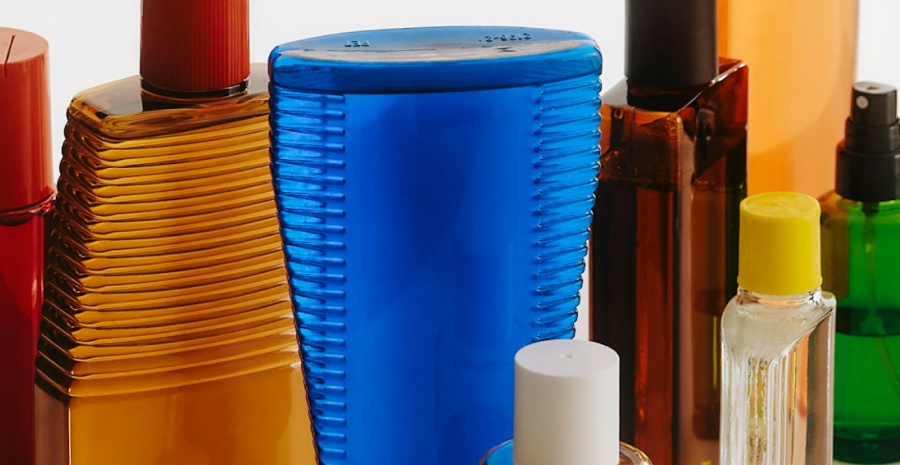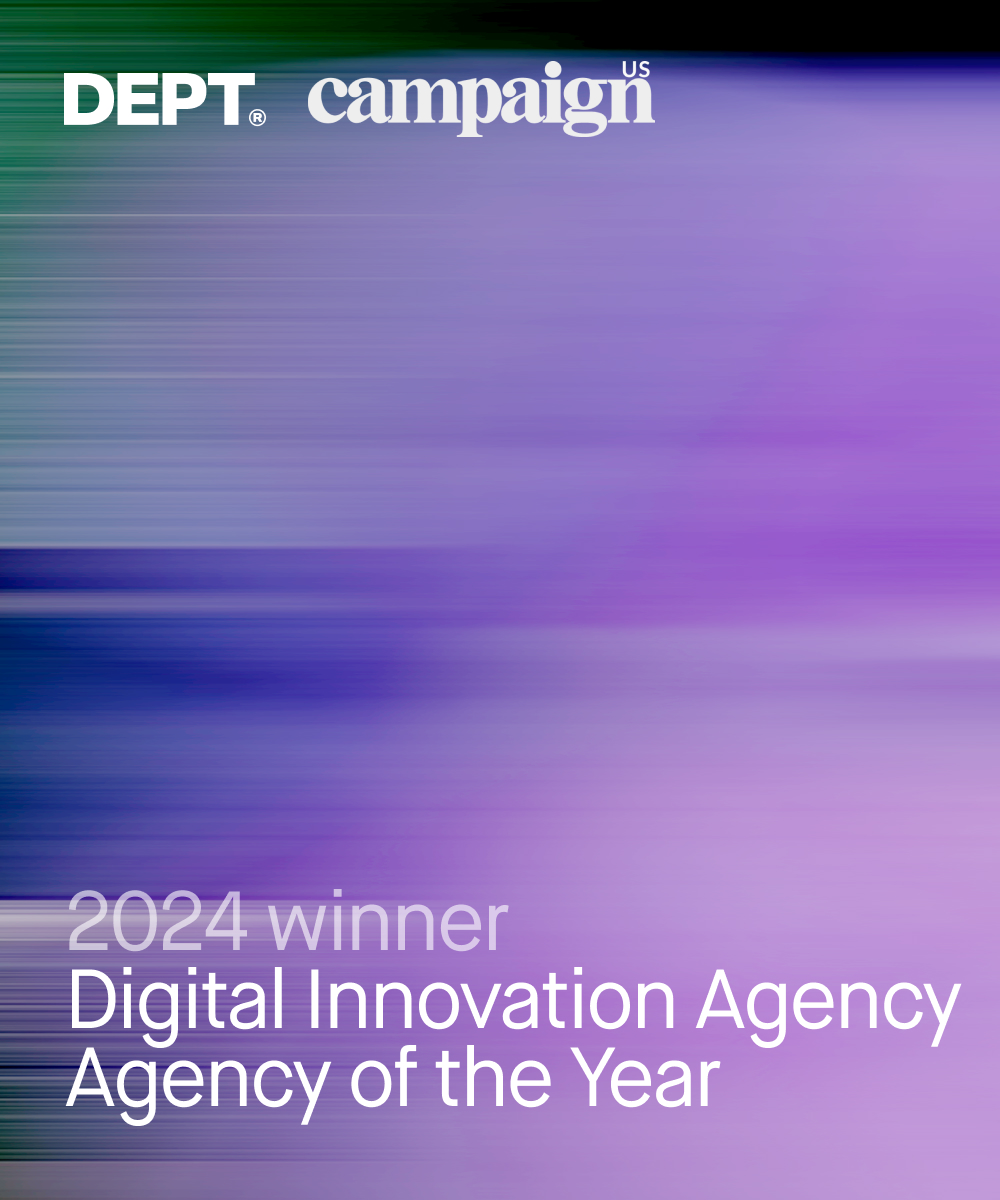Overview
This longread dives deep into what separates companies from brands, detailing how you can become a brand of choice without spending, hiring or building more; just by thinking differently. Download now to find out how you can magnify your market position and define stronger consumer connections.
More Insights?
View all InsightsWhen you woke up this morning and took a hot shower, brushed your teeth, poured a fresh coffee, checked the news on your mobile, and drove to work, did you, at any point, pause to think about the brands behind these daily interactions? The answer for many of you is probably ‘no’ – or ‘hardly ever at all’. Yet, how astonishing is it that the brands supporting our everyday lives are chosen for our own individual and personal reasons. Not by chance, not by force, but by choice.
There are hundreds of highly-rated brands of coffee, so why did you pick the one you drank this morning and, importantly, why do you continue to buy it? The motivational reasons behind consumer choice may seem like a paradox with theories and facts colliding, but it all boils down to one thing. Trust. Trust in its quality. Trust that it will deliver. Trust that it is right for you, personally.
In a 2019 consumer research study, surveying 16,000 consumers across 8 global markets, 81% of respondents said that trusting a brand to “do what is right” is a deciding factor in a purchase decision. And, if consumers trust a brand, they also exhibit behaviours that demonstrate loyalty; three-quarters of the respondents said: “they will continue to buy a brand they trust, even if another brand suddenly becomes hot and trendy.” They’ll also advocate on the brand’s behalf, with 76% saying they always recommend the brand if someone asks.
Research into the field of decision-making is expansive; tapping into the chemistry of the human brain and uncovering strategies to release endorphins when shopping. The book ‘Start With Why’ by Simon Sinek explores the concept of the ‘Golden Circle’; an ability to focus on the ‘why’ of the business rather than the ‘what’, with the ‘how’ being the gel that brings it together. In short, communicating ‘why’ you are in business, not directly ‘what’ you are offering or ‘how’ you do it.
Some of the world’s most inspiring brands (think Nike and Apple), have adopted this concept to build followers and establish themselves as a brand. It’s never been easier to start a company, but because of this, it’s also never been harder to build a brand. A brand won’t wash away easily when the tide comes in because it’s anchored by meaning. How does your business approach rank on the trust barometer? If you’re not sure if you’re leading with a brand or a transactional message, answer these 5 questions to help evaluate your positioning.
How does your business communicate with customers?
a) Using a direct, product-centric tone of voice.
b) By focusing on our core values and creating conversation.
What sales tactics does your business use the most?
a) Flash sales, 2-4-1 offers and lowest- price guarantees; utilising the fast release of products with marketing strategies to encourage a high volume of sales.
b) Building a relationship with customers and creating rapport with target markets. Inviting people to browse products with no pressure to buy.
Which of these businesses have a similar marketing strategy to yours?
a) Boohoo, Love Holiday, PC World
b) Huel, Nespresso, Rapha
How loyal are your customers?
a) Shoppers will jump around trying to find the best bargain before making a purchase.
b) Customers follow our updates through the news and our social channels, they’re part of our community and await new releases.
5.Why is data important?
a) It helps us boost transactions; showcasing product specs and incentivising customers during the purchasing journey with add-ons and facilitating dynamic price reductions.
b) Data helps us better connect with our customers by understanding their feelings, habits, values and desires.
Are you a why or a what?
If you’ve answered B to the majority of the questions, you’re clearly focused on establishing your business as a brand. You’ve defined your mission statement in a way that resonates with consumers by focusing on the ‘why’ behind what your brand is aiming to achieve, which may stem from why your business was set up in the first place, or why it is different from the market you go up against.
If you have a mixed scorecard or found your business didn’t exactly fall into one answer or the other, you’re most likely operating as a brand but haven’t fully fine-tuned your value proposition. Most businesses will fall into this middle-layer and feel most comfortable triggering the ‘how’, explaining how they do what they do. This may relate to manufacturing, your culture, or your teams. In many ways, the how combines what you do with why you do it.
If A was your primary choice throughout, you’re focused on positioning yourself as a ‘transactional’ company rather than a brand. You take a sales-heavy approach to marketing by linking all of your announcements to your product, its specifications and price. There is no right or wrong approach; companies that only have transactional relationships can still be highly successful, but they often have to work much harder to secure consumer loyalty in a crowded marketplace. They will also find it harder to weather storms, such as the recent disruption caused by the Covid-19 crisis.
To demonstrate the above concepts, here’s an example of how a bed retailer could take three different approaches to advertising a new range of mattresses:
- WHY – the focus is on wellbeing and achieving a good night’s sleep, with visuals of people feeling rested and energised, ready to conquer the day ahead.
- HOW – specifying the mechanics of the mattress with product images detailing what makes this range top-of-the-line quality or unique in the marketplace.
- WHAT – offering next day delivery, combo deals or a percentage off the purchase price for trading in your existing mattress. Images will showcase stockpiles of mattresses in the showroom ready to be rehomed.
Masters of the ‘why’
A similar approach can be adapted to all businesses, ranging from B2B to B2C across all sectors, products or services. If you ask people what their favourite businesses are, they’ll always choose a brand. Often, they won’t know why; they just feel empowered by these brands and associate with their values in a personal way that can’t be explained.

The following brands accelerate the ‘why’ exceptionally well with a crisp mission statement:
“Bring inspiration and innovation to every athlete in the world” – Nike
“Bring the best user experience to its customers through innovative hardware” – Apple
“Accelerate the world’s transition to sustainable energy”- Tesla
These brands are amongst the most revolutionary to launch within the last two decades. Tesla makes for an excellent case. Not only has Tesla managed to penetrate the automotive market, which many have tried to do, but it has managed to captivate drivers in an unprecedented way. Tesla has taken drivers on its journey; and because of this, there is a remarkable sense of loyalty and patience. Despite their vehicles carrying a high price tag and facing major issues with the quality of manufacturing from parts falling off to self-driving mishaps, Tesla drivers don’t mind. They’re still proud to own a Tesla. This example signifies the value of building a connection with your customers and how it enables brands to focus on the product a little less. One may speculate the backlash competitors Range Rover or Audi would face in the same circumstances.
Although ‘start with why’ is a great concept, companies like Tesla are not born very often and can be difficult to relate to. Businesses should be realistic with their goals and leverage data to shape their proposition. Start with a database of customers or a CRM if you have one, and then dig deeper to reveal what makes your target audiences tick. With this insight, seek opportunities for your business to empathise with them.
The ‘human-first creativity, crafted by data’ approach conceptualised by DEPT® sparks new ways of thinking. The newly released ebook entitled the ‘The Secrets Behind Consumer Demand’ enables markets to unlock just that, as we discuss new methods to engage with customers without spending more, build better-converting content and platforms and connect with audiences in more intelligent ways.

More Insights?
View all InsightsQuestions?
Executive Creative Director
Jake Welsh
In a recent report, What Should Ads Look Like in the Time of Recession?, the question was asked, “are people responding to ads differently?” during the coronavirus crisis. The report looked to establish the mood of the nation, whether opinions have pivoted and, if so, how? To understand what kind of ads are connecting with consumers, the report compilers looked at their ad-testing data and found that there has been no reduction in advertising’s ability to connect with audiences, but there are better performing approaches than others. So what approach should your brand take to its current advertising?
Marketing based around fluent, recognisable brand characters and familiar setups are performing well. Obvious examples include long standing campaigns like Compare The Market’s meerkat, and Go Compare’s Gio Compario. Also think about familiar brand devices, like Tesco’s ‘Food love stories’ and the black and cream design in every Guinness ad. These brand devices naturally lend themselves to agile work, as the setup is already well established; a proof-point of a long term, brand building strategy.
The report found that three ad topics were connecting more in recent weeks: togetherness, community and place, and nostalgia. The issue is, that this approach is obvious. It’s obvious enough to have spawned an entire genre of advertising during the lockdown period. Nicely compiled in this video and torn apart in Mark Ritson’s most recent column, the combination of a blatant ‘togetherness’ approach and reliance on filmed-at-home content has caused collective amnesia around the importance of ensuring the brand stands out from the crowd.
Togetherness is nothing new
This situation should feel familiar. Since 2016, ‘togetherness’ has been a central plank of hundreds of brand propositions. Most people point to the divisive elections on both sides of the Atlantic, and the explosion of social media bickering, but it was equally spurred on by the world of entertainment. On-demand TV has changed the idea of a collective viewing experience. The biggest summer blockbusters were all part of one superhero narrative. The best selling video games were almost exclusively built around online multiplayer.
Plenty of brands hopped on the trend, Heineken, McCains and Nike each explored the idea of togetherness in different ways. Brands and products that bring people together around a shared love, experience or place. It’s such a common approach that meta-advertising developed around it, in the form of Oasis’s ‘Refreshing’ campaign.
What’s also important to note, is how central digital marketing was to a number of these campaigns. Too often, marketers see digital as a sales first channel, not equipped to support brand building campaigns. Look back to the examples – Heineken’s ‘Worlds apart’ video was around 3 minutes (depending on the edition), designed for viewing on YouTube and social media, rather than TV. Nike’s ‘Nothing Beats a Londoner’ generated so much buzz through social media shares and by being a high density online video, allowing viewers to rewind and rewatch to spot the different sports and grime star cameos.
What’s not working right now
Before getting into how your brand should can implement the report’s insights, we first need to consider which marketing approaches are not currently working.
Hard sell tactics are underperforming, as are overly product-focused ads and competitive branding. This is a time for brand building, not aggressive selling. Not only are sales activations not landing, well established brands typically recover faster when the economy enters a recovery period.
The brands who focus on transactional relationships will have to work much harder to keep consumers interested.
Fame, feeling and fluency
There are two words that are central to making this brand building period a success: look and feel. While many brands will be approaching the situation from a similar tone, perhaps even a similar execution, the brand’s look and feel is what sets it apart.
In terms of what a look and feel aims to achieve, the three key metrics are fame, fluency and feeling. Many marketers will already be familiar with the concept:
- Fame: does the brand easily come to mind?
- Feeling: do you feel good about buying it?
- Fluency: are the key assets easily recognisable as being from your brand?
Targeting fame results in brand recall. The brand imagery is remembered, as is the proposition. Everyone wants to be top of mind when the customer gets close to finalising a purchase; great fame campaigns centre on these moments. The most obvious fame devices are brand characters that hammer home a name that pops into the potential customer’s head when they go to Google “insurance”. But there are far more options available here.
This is where fluency is important. Do customers instantly recognise your brand assets the second they see them?
Think of each touchpoint and how your business is involved at that stage. Each of the new challenger banks have designed an easily identifiable card that stands out at any contactless moment. Monzo’s coral pink, Starling’s pastel green, Revolut’s blue and purple gradient. These are images of the brand that non-users start to recognise when they see others paying for products.
Consider every touchpoint
In the online space, look to touchpoints like messaging, online checkouts and shareable content. In the past few years, Sainsbury’s have systematically turned each of their recent campaigns into GIFs that follow their “monochrome plus orange” design. Each GIF is tagged around mealtimes or food-based events, aiming to reach hungry households that are discussing what they should have for tea on WhatsApp. Klarna’s pastel pink digital videos prep the potential customer for recall when they reach the online checkout and look down the overwhelmingly blue and white list of payment options.
Going back to the montage of identikit pandemic ads, there is clearly work to be done on establishing a DIY-footage look. The irony is, that for the past ten years video based social media sites and YouTube users have pretty comprehensively explored this challenge through custom filters, DIY filming techniques and animation. For example, on YouTube, two different history-based videos can end up with this scattershot lo-fi style and this irreverent animation. There are plenty of TikTok and Instagram users putting out dance based videos, but Donté Colley stands out through his unique emoji based look.
Finally, feeling. What about the brand, product or service makes the customer feel good? Safety and reliability are major drivers now, hence the success of advertising that focuses on brand heritage and years of successful service.
Focusing on this emotive side leads consumers to focus on their brand preference, rather than comparing the various product benefits. For anyone looking for deeper insight on branding and consumer demand, check out our new download, The Secrets of Consumer Demand.
As made clear by Mark Ritson in the earlier mentioned article, brands shouldn’t throw out every pre-crisis campaign. While certain campaigns will not work due to their content or the mood of the piece, brands should be looking to use existing work rather than struggle to create new content.
Recycle old campaigns
Seeing as brand consistency is a key aim, think of how older assets can be recycled across new campaigns. Pre-pandemic, BMW created a reseller campaign that only used older campaign footage, retooled around the pre-owned market. Budweiser recently brought back their ‘Whassup’ campaign, rerecording parts of the dialogue to mention the quarantine but keeping the original footage. Not only does this solve the challenge of recording footage on lockdown, it also trades heavily in nostalgia, a trope that is connecting well with consumers.
Rather than throwing out campaigns, look through past brand comms for inspiration, what can be upcycled, and what are the ongoing brand assets that build fame over the coming months. Creating theses memory cues sets up your business for the future, not just for the recovery period, but also for the years that follow.
More Insights?
View all InsightsQuestions?
Executive Creative Director
Jake Welsh
The COVID-19 crisis has prompted many businesses to fast-track their plans to launch a direct to consumer model (D2C). The impact of nation-wide measures to contain the spread, from store closures through to face-to-face business limitations, are ricocheting through most sectors, placing new challenges on existing supply chains.
Some B2B businesses who have an online presence are speeding up their ecommerce plans, launching microsites to target new consumers, while others are focusing on the quickest route to market – Amazon. Whichever route you’re taking, it’s advisable to not just see these actions as a short term way to open up temporary revenue streams; those who lay solid foundations now can reap the rewards long after we come out the other side of this pandemic. A customer retention strategy will be key to long term D2C success.
In the simplest terms, does your business encourage repeat purchasing? Seeing the aim as ‘customer loyalty’ can cause slightly misguided approaches, as consumers are inherently brand promiscuous. People shop at multiple supermarkets, wear Nike, Adidas, New Balance and Asics trainers, and are signed up to Netflix, Prime Video and Now TV. Retention vs loyalty is a fine hair to split, but important. The aim of a good retention scheme is to sell more products, not to cut a rival’s market share.
One of the most heralded executions of this principle is Sainsbury’s ‘Try something new today campaign.’ In 2005, the retailer set a goal of £2.5 billion in additional sales over three years. £2.5 billion is a lot. But in terms of current customers, it amounted to just £1.14 extra each time they shopped. Reframing the challenge as, ‘how do we get shoppers to spend an extra £1.14 on each shop?’ gave rise to the ‘try something new today’ idea; spend a little more on food you’ve always wanted to try and break the monotony of your go-to set of meals. Sainsbury’s reached their £2.5 billion goal with months to spare.
What’s relevant about this example today is what followed: the 2008 financial crash. ‘Try something new today’ continued during the credit crunch, reoriented around the proposition of trying a new, cheaper option. The principle that drove repeat purchasing continued to work during the crisis, meeting the evolving everyday needs of the retailer’s audience.
This illustrates the importance of beginning with your brand proposition first and the product offering second. What is it that your brand promises to consumers? How do they feel when purchasing from you? This is your emotional reason to believe, the essence of the brand that connects with the everyday pressures facing consumers. (You can read more about how to build your brand in our new longread, The Secrets of Consumer Demand).
As an example of this in action during the coronavirus response phase, look to the finance industry. Banks and building societies promise peace of mind that personal finances are safe. From this initial emotive reason, coronavirus related policies evolve. Using Nationwide as a reference point, the building society is offering increased overdraft limits and penalty free early access to fixed term savings accounts. Taking the idea of financial safety a step further, they have raised the contactless payment limit to make grocery shopping a safer experience, due to contamination fears around physical money. Each benefit returns to the emotional core of their consumer finance offering.
As a D2C, particularly as a new entrant, it is important to follow this understanding of the emotional benefit of your brand offering with a deep understanding of how different audience demographics buy your products. Ease of purchase should always be a top priority; to achieve this you must know how each segment shops. By segmenting your sales figures around audience dynamics, the business can start to establish the key demographics to target.
As a theoretical example, an electronic parts manufacturer may find that batteries make up 60% of their D2C sales, while connectors, power supplies and semiconductors contribute 40%. Battery buyers are the majority, but the manufacturer needs to understand the entire shopping experience of their customers. They could find that very few battery buyers are returning to order more, while semiconductor buyers often follow up their purchase by ordering memory chips and microcontrollers.
In normal circumstances, you’d look to implement intelligent personalisation on your site, but that requires technology investment, expertise and content. With the time pressure you’re under, park that for now. Instead, use your site and sales data to implement some basic UX improvements and comms such as a ‘suggested purchases’ box and automated follow-up emails that suggest further products that other customers also bought.
During this disruptive pandemic, this level of data analysis is vital in understanding the difference between a temporary sales uplift and an upward curve, showing signs of recovery.
Purchase drivers
There’s no denying that the ‘norms’ of purchase behaviour have gone out the window at the moment. Right now, the top purchase drivers are around health, safety and reliability of service. Use your brand and comms strategy to reflect these concerns and aim to sooth the worries of customers. In this response phase, your business should be aiming to build brand sentiment, leaving a lasting, positive impression on buyers that prepares the business well for the end of the pandemic.
Consider the ways you can support their purchase and delivery to ensure that they have a great brand experience, in addition to a great shopping experience. In China, companies like Hey Tea and Starbucks quickly began to advertise their ‘contactless’ delivery option that adheres to social distancing advice.
In the US, the DIY company Lowes have applied their emotional benefit – their products help people build items they’re proud of – to the crisis, coming up with a campaign encouraging customers to build signs thanking emergency services and healthcare workers.
Contact has a huge effect on retention. If your business is missing its in-person presence, it’s important to find new touchpoints to keep a long term customer relationship going. In the D2C space, the furniture store Burrow have made store employees available over the phone through scheduled appointments, replacing the in-store advice function.
In this regard, think of the key communications channels that people are using in this crisis and consider how your brand can use them to engage with current customers. Video chat apps like Zoom are exploding right now, and messaging apps like WhatsApp and Messenger are being used even more. Can those face-to-face touchpoints be replaced with video LiveChat? Can you start to build a WhatsApp channel to supply current customers with more information and regular updates?
For brands new to the D2C model, providing a subscription option can be a simple way of ensuring retention on a weekly or monthly basis. In a similar vein, consider web features that ease the process of repeatedly buying the same product, such as basket memory.
Loyalty, gamification and rewards programmes are also an option. During this response phase, it can be worth taking a corporate social responsibility focused approach to rewarding behaviour. Rather than customers earning points, the brand could pass the points value on to charities and those in need. Some have built sales activations specifically for key workers. In terms of gamification, look to the BBC’s ‘Stay at home’ badge for parents and children; a gamified rewards system that allows parents to broadcast how good they have been in the crisis.
Getting to grips with personalisation is one of the biggest drivers of retention. By showing that your brand understands the customer’s needs, their preferences, and suggesting further buys based on this information, the customer will start to feel personally catered to, even if it is an entirely automated, algorithmically determined service. Not only is it easier to buy with a personalisation system in place, it’s easier to find new products to add to the basket. Tracking personalisation also builds into internal data analysis, boosting audience understanding.
With these systems in place, retaining customers as a newly D2C company is a far simpler task. All of this effort now delivers a sustained sales channel that can still be used as the economy enters the recovery phase and lockdown measures begin to relax. Having that additional revenue channel in place for what comes next can be a major plus for your business as the world starts to get back on track.
More Insights?
View all InsightsQuestions?
Head of Marketing, EMEA









